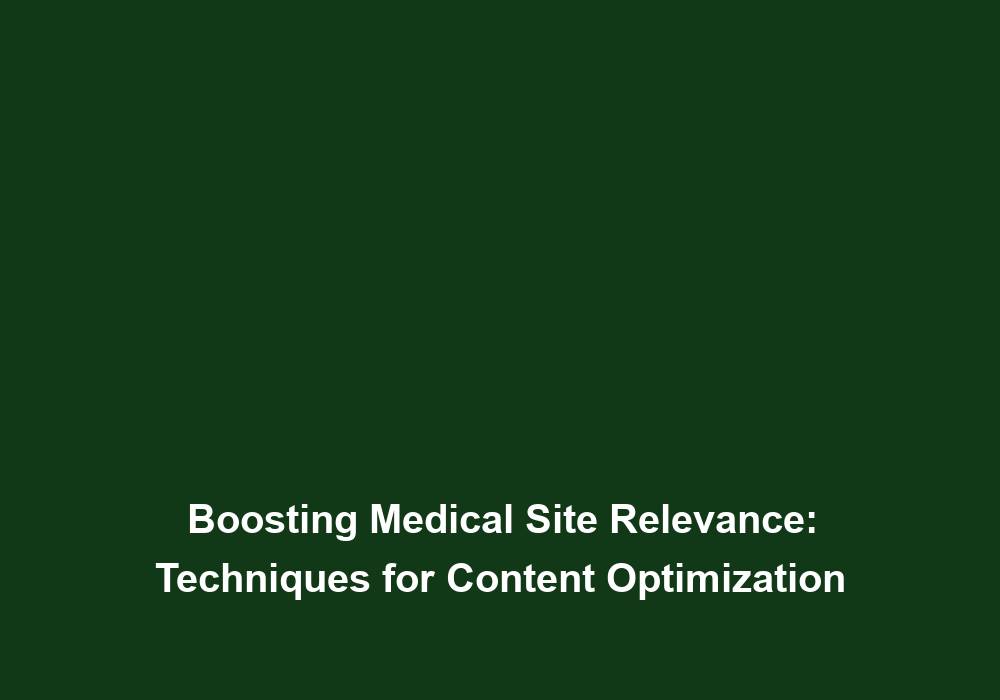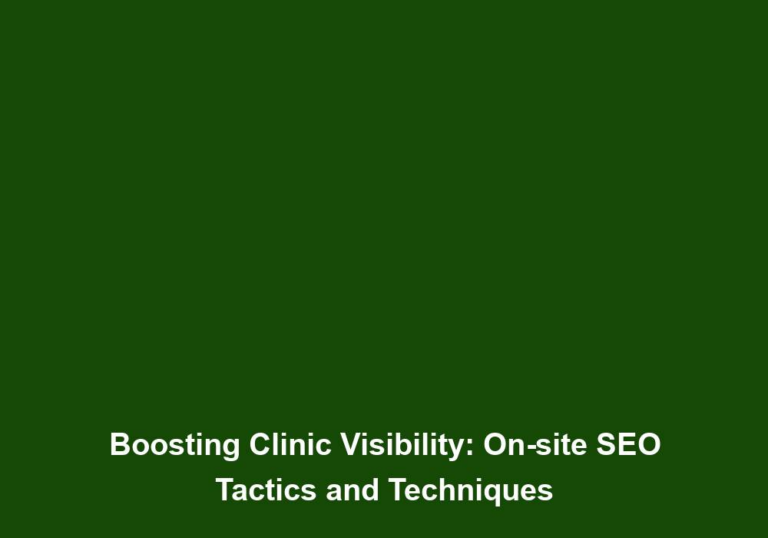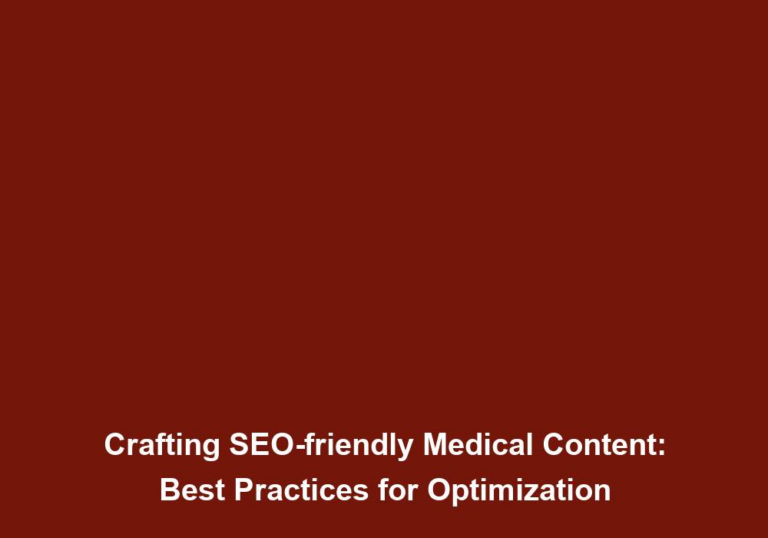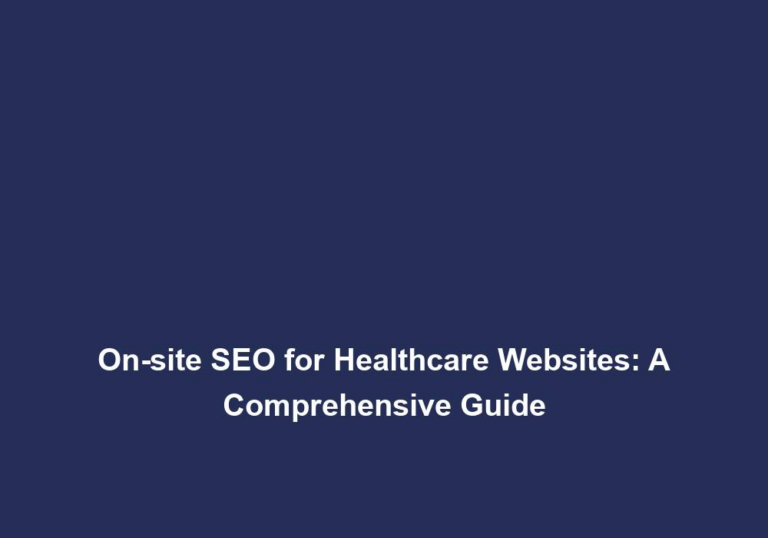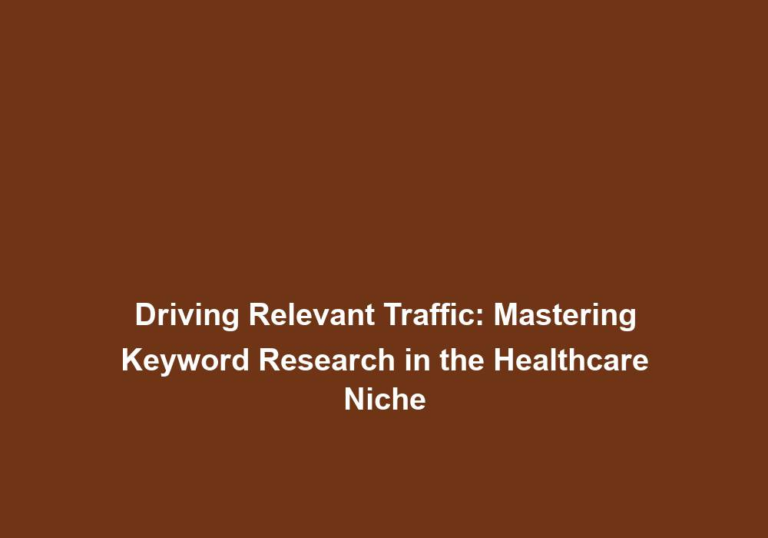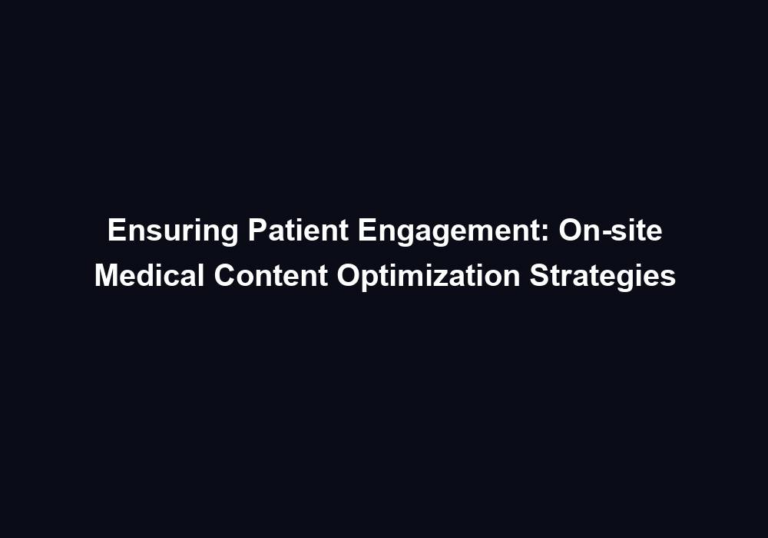Boosting Medical Site Relevance: Techniques for Content Optimization
In today’s digital age, having a strong online presence is crucial for any medical website. With the ever-increasing competition in the healthcare industry, it is essential to optimize your website’s content to improve its relevance and visibility in search engine results. In this article, we will explore various techniques and strategies for boosting the relevance of your medical site through content optimization.
Why is Content Optimization Important?
Before diving into the techniques, let’s understand why content optimization is crucial for your medical website. Search engine algorithms constantly evolve to provide users with the most relevant and valuable information. By optimizing your content, you can improve your website’s visibility in search engine rankings, attract more organic traffic, and ultimately increase the chances of converting visitors into patients.
Content optimization plays a vital role in enhancing the user experience on your website. When your content is well-optimized, it becomes more accessible and easier to understand for your target audience. This can lead to improved engagement, reduced bounce rates, and increased time spent on your site, all of which are positive signals to search engines.
Moreover, content optimization allows you to strategically incorporate keywords and key phrases that potential patients are using to search for medical services online. By aligning your content with these search queries, you can increase the likelihood of your website appearing in relevant search results and attracting the right audience.
1. Conduct Keyword Research
Keyword research forms the foundation of content optimization. It involves identifying the words and phrases that potential patients are using to search for medical services online. By integrating these keywords strategically into your content, you can increase the chances of your website appearing in relevant search results.
To conduct effective keyword research, you can utilize various tools such as Google Keyword Planner, SEMrush, or Moz Keyword Explorer. These tools provide valuable insights into search volume, competition level, and related keywords. Look for keywords that have a high search volume and a low level of competition. Additionally, consider long-tail keywords (phrases with three or more words) as they often have higher conversion rates.
When incorporating keywords into your content, ensure that they flow naturally and do not disrupt the readability or cohesiveness of your writing. It’s important to strike a balance between optimization and providing valuable information to your readers.
2. Create High-Quality and Valuable Content
Once you have identified relevant keywords, it’s time to create high-quality content that provides value to your target audience. Search engines prioritize websites that offer valuable information and user-friendly experiences. Here are a few tips for creating valuable content:
- Make sure your content is well-researched, accurate, and up-to-date. Conduct thorough research to ensure the information you provide is trustworthy and current.
- Write in a clear and concise manner, avoiding jargon and complex medical terms when possible. Use simple language that is easy for your audience to understand.
- Use headings, subheadings, and bullet points to break down the information into easily digestible chunks. This helps readers scan the content and find the information they need quickly.
- Incorporate visuals such as images, infographics, and videos to enhance the user experience. Visual content can make your articles more engaging and easier to comprehend.
- Provide answers to commonly asked questions to address potential patient concerns. Anticipating and addressing these questions can help establish your website as a reliable source of information.
Remember, the goal is to establish your medical website as a trusted resource that provides valuable insights and answers to your audience’s queries.
3. Optimize On-Page Elements
Optimizing your content goes beyond the textual information. You should also pay attention to various on-page elements to further enhance your website’s relevance. Here are some areas to focus on:
Meta Tags
Meta tags provide a brief description of your webpage to search engine users. Optimize your meta titles and descriptions by incorporating relevant keywords and ensuring they accurately represent the content on the page. This will improve click-through rates and attract more targeted traffic.
URL Structure
Ensure your URLs are descriptive and include relevant keywords. For example, instead of using a generic URL like www.medicalwebsite.com/page1, use www.medicalwebsite.com/medical-services to provide more context to both users and search engines.
Header Tags
Use header tags (H1, H2, H3, etc.) to structure your content and highlight important sections. The H1 tag should contain your target keyword and reflect the main topic of the page. Subheadings (H2, H3, etc.) can be used to divide the content into relevant sections, making it easier for both users and search engines to navigate.
Internal and External Linking
Include internal links within your content to guide users to related articles or pages on your website. This helps search engines understand the structure of your site and improves user experience. Additionally, consider linking to authoritative external sources to further demonstrate the credibility and relevance of your content.
By optimizing these on-page elements, you can enhance the overall user experience and make it easier for search engines to index and understand your content.
4. Mobile Optimization
In today’s mobile-driven world, optimizing your medical website for mobile devices is imperative. Mobile optimization involves ensuring your website is responsive, loads quickly, and offers a seamless experience across different screen sizes. Search engines prioritize mobile-friendly websites and often penalize those that are not optimized for mobile devices.
To optimize your website for mobile, ensure your website layout adapts to different screen sizes. Use responsive design techniques to make sure your content is easily readable and accessible on smaller devices. Additionally, optimize your images for fast loading and minimize the use of large files that can slow down mobile loading times.
By providing a seamless mobile experience, you can cater to a larger audience and improve your website’s visibility in mobile search results.
5. Monitor and Analyze Performance
Once you have implemented the above techniques, it’s important to monitor and analyze the performance of your medical website. Utilize tools like Google Analytics to track key metrics such as organic traffic, bounce rates, and conversion rates. This data will help you identify areas for improvement and adjust your content optimization strategies accordingly.
Regularly update your content to keep it fresh and relevant. Analyze user behavior to understand how they interact with your website and identify any pain points or areas of improvement. Stay up-to-date with the latest trends and algorithm changes to maintain a competitive edge in the ever-evolving digital landscape.
Conclusion
By implementing these content optimization techniques, you can boost the relevance of your medical website and improve its visibility in search engine results. Remember to conduct thorough keyword research, create valuable content, optimize on-page elements, ensure mobile optimization, and regularly monitor performance. Embrace the power of content optimization to attract more patients and establish your medical website as a trusted source of information in the online world.
This article has been generated by OpenAI’s GPT-3 language model.

